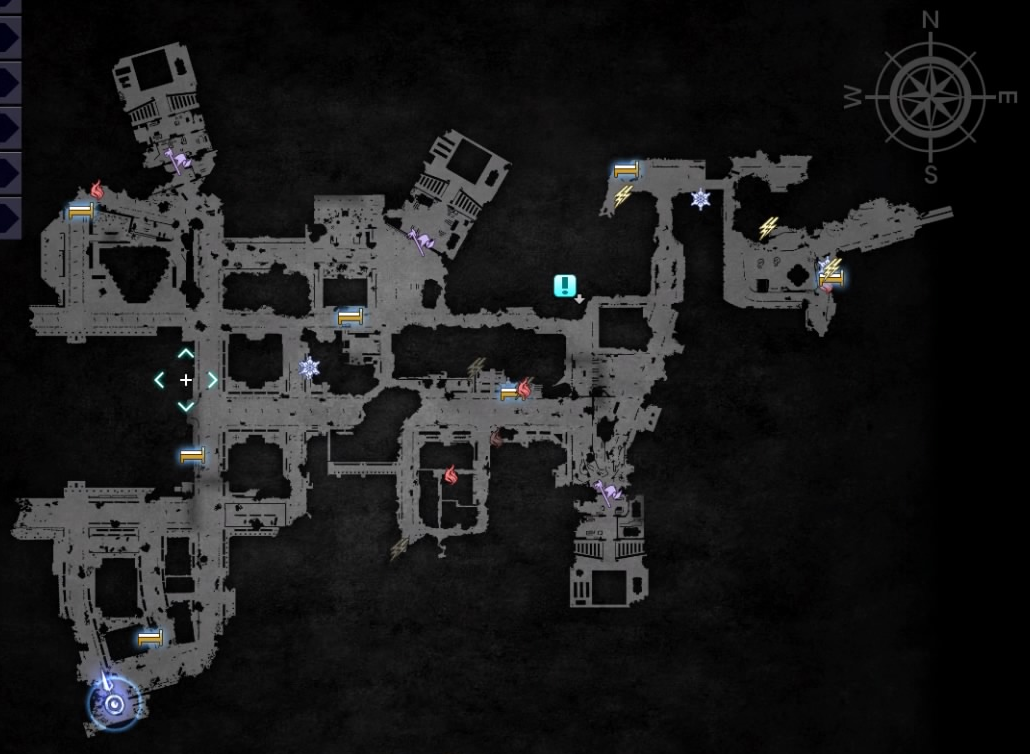Final Fantasy XV by Square Enix has a very immersive nature using multiple different types of immersion to keep the player entranced. Immersion is generally described as when the player gets absorbed into the game and loses some sense of reality. The different types of immersion don’t occur separately but rather simultaneously and at different times which is much more effective than applying one type of immersion alone or applying all of the types, all of the time.
Final Fantasy XV builds up Spatial immersion from the environment of the game by making it seem possible and believable to the player. Narrative immersion comes into play as the game builds the characters’ stories and conflicts those characters are involved with. The general combat mechanics of the game give the player challenges the create strategic immersion to engross the player. The immersion created by the game, absorbs the player and makes them put reality outside of their consciousness.
Spatial Immersion
Spatial immersion occurs when the player feels that they are actually present in the game environment instead of merely thinking that they are observing the game from a monitor2. Final Fantasy XV achieves this by creating environments that are believable to the player by making sure nothing is out of place in the setting like by not having lots of wild life roaming a desert3. This doesn’t mean that the environment needs to match reality but rather the environments should fit in the lore and setting of the game itself.
Final Fantasy XV does this by making the towns and cities outside of the Crown City, Insomnia, appear almost rundown and at a lower technology level than Insomnia as it appears as a very modern city with skyscrapers, due to the fact that Insomnia became cut off from the world for decades. The environments in the game are also very detailed requiring the player to mentally comprehend the complexity which adds to the immersion1.

Certain aspects of the environment of the game world were designed around how reality works as the Sun in Final Fantasy XV is much brighter than anything else in the game and instead of having the light be adjusted so that the player can see, the camera adjusts to the change in light much like our eyes do. The characters’ clothing and the vehicle they drive in become dirty depending on the current location, for example covered in dust when in a savanna and shiny and wet when submerged in water.
These details add to the believability of the game environment as they try to closely resemble reality which makes the player believe that they are actually in the game world instead of in reality.
Narrative Immersion
Narrative immersion occurs when the player emotionally becomes involved in the game in some way rather than merely observing from a distance3. Final Fantasy XV does well to entrance players through a narrative standpoint as it creates characters with characteristics or dilemmas that the player may resonate with.
As the player learns more about the characters and witness the characters fight through inner and outer conflicts, the player becomes emotionally attached to the narrative creating immersion. This emotionally attachment propels players to keep playing to learn more about the characters or find out if they succeed or not.
The characters of Final Fantasy XV all have some sort of problem designed emotionally connect with the player ranging from being insecure bout one’s self, suffering painful losses, feeling powerless, and others. This emotional involvement about caring for the outcome creates a strong narrative immersion for the player3. The narrative of Final Fantasy XV also follows conventional storytelling techniques well with large plot twists, buildup of tension, large climaxes, and complete resolutions of conflict.
Strategic Immersion
Strategic immersion occurs as a player engages in task with a series of goals that the player focuses on2. The combat mechanics in Final Fantasy XV allow for the player to engross themselves by how to fight enemies. The player can use their intellect to solve for the best solution of how to fight particular enemies. This calculation could take into account the enemies’ weakness, the current supply of equipment the player has, and the strengths of each character currently in the party.
Final Fantasy XV allows the player to use a wait mode in combat which freezes time when a player checks the status of enemies which lets a player to take as much time as they want to analyze an enemy and plan a strategy. This builds strategic immersion as the player becomes focused on how to defeat difficult enemies. There are also many places in Final Fantasy XV which solely contain difficult puzzles that the player must solve. These places can easily ensnare players into playing as they continue to try and solve puzzle after puzzle.

The three types of immersion stated are not always in use during gameplay and are not always used alone. The prevalent type of immersion in Final Fantasy XV is spatial immersion as the player is always in graphically intense environments that put the player in the game. Rather the narrative and strategic types of immersion are only applicable during certain moments of gameplay.
Narrative immersion only occurs during the main quest or side quests closely related to the main quest like detours that go more in depth into main characters. While strategic immersion only occurs during battles or puzzles however that doesn’t mean that narrative and strategic immersion cannot overlap as there are hard bosses during the main quest and character dialogue may progress during fights.
So, a combination of different types of immersion can lead to a greater effect also having breaks from a certain type of immersion can prevent a player from getting tired or bored from being exposed to too much.
References
1. Analysis: The Psychology of Immersion in Video Games (2010) by Jamie Madigan. Retrieved at http://www.gamasutra.com/view/news/29910/Analysis_The_Psychology_of_Immersion_in_Video_Games.php
2. Different types of immersion and how they work (2012) by Daniel Moeller. Retrieved at https://ispr.info/2012/06/28/different-types-of-immersion-and-how-they-work/
3. What do we mean when we call a game 'immersive'? (2010) by Keith Stuart. Retrieved at https://www.theguardian.com/technology/gamesblog/2010/aug/10/games-science-of-immersion




